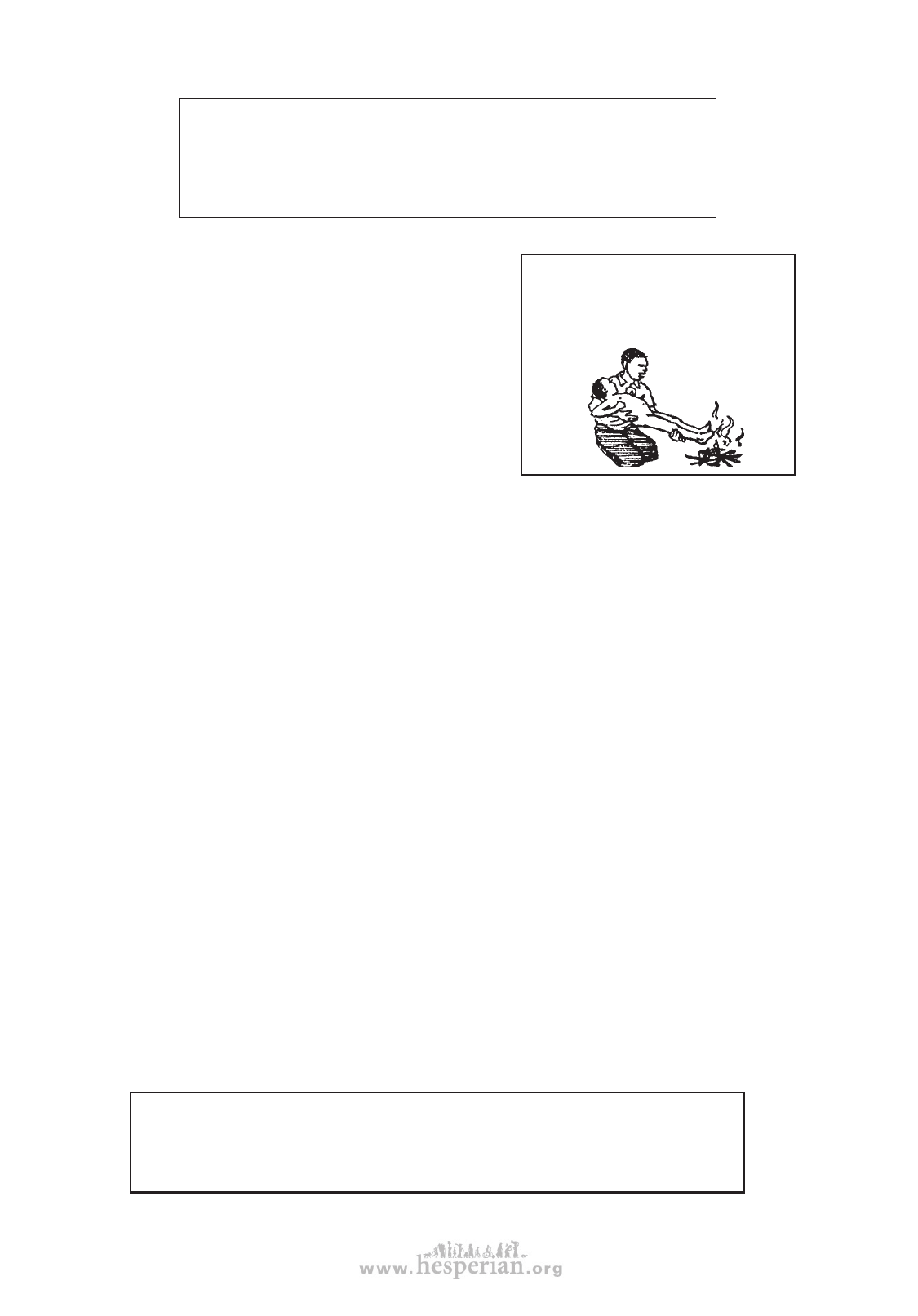
236 chapter 29
CAUTION: Great care is needed to select the medicines that help
the individual child most, and which do her the least harm. Try to
avoid giving so much medicine that she always seems sleepy, dizzy,
slow-moving, or loses interest in things. A few seizures may be
better than too much medicine—which can poison the child.
Choosing medicines
The best medicine (or medicines) for a child
with epilepsy is one that is:
• effective (prevents the seizures).
• safe (has few side effects).
• cheap (because it must be taken for years).
• easy to take (long-acting, few doses a day).
• easy to get.
WARNING: When child is having a
seizure do not put his feet into a
fire, it will not ‘frighten him back to
life’ but will severely burn him.
Many different medicines are used for epilepsy. Some types of seizures are controlled
better by one medicine and some by another medicine, or by a combination of medicines.
Some children’s seizures are easy to control. Others are very difficult. It may be necessary
to try different medicines and combinations to find the most effective treatment. In a few
children, no medicines will control the seizures completely.
The best medicine to try first for almost all types of seizures is usually phenobarbital.
Often it is very effective, and is relatively safe, cheap, and easy to take. Usually it is taken
2 times a day, but with some people only once a day at bedtime is enough.
The next best medicine for ‘big’ seizures is usually phenytoin. It is also fairly safe,
cheap, and usually needs to be taken only once each night. (For some kinds of epilepsy,
however, phenytoin may make seizures worse.)
For most epilepsies, phenobarbital and phenytoin are often the best drugs. First try
each alone, and if that does not work, try both together. Most other drugs are less likely to
be effective, are often less safe, and are much more expensive.
Unfortunately, many doctors prescribe more expensive, less safe, and often less
effective medicines before trying phenobarbital or phenytoin. Partly this is due to drug
companies that falsely advertise their more expensive products. In some countries,
phenobarbital is difficult to get—especially in pill form. The result is that many children’s
seizures are poorly controlled, using drugs that cause severe side effects and that are very
costly. Rehabilitation workers need to realize this and do what they can to help provide
the safest, cheapest medicines that will effectively control each child’s seizures.
CAUTION: To prevent choking, do not give medicines to a child while she is
lying on her back, or if her head is pressed back. Always make sure her head is
lifted forward. Never give medicines by mouth to a child while she is having a
seizure, or while she is asleep or unconscious.
Disabled village Children